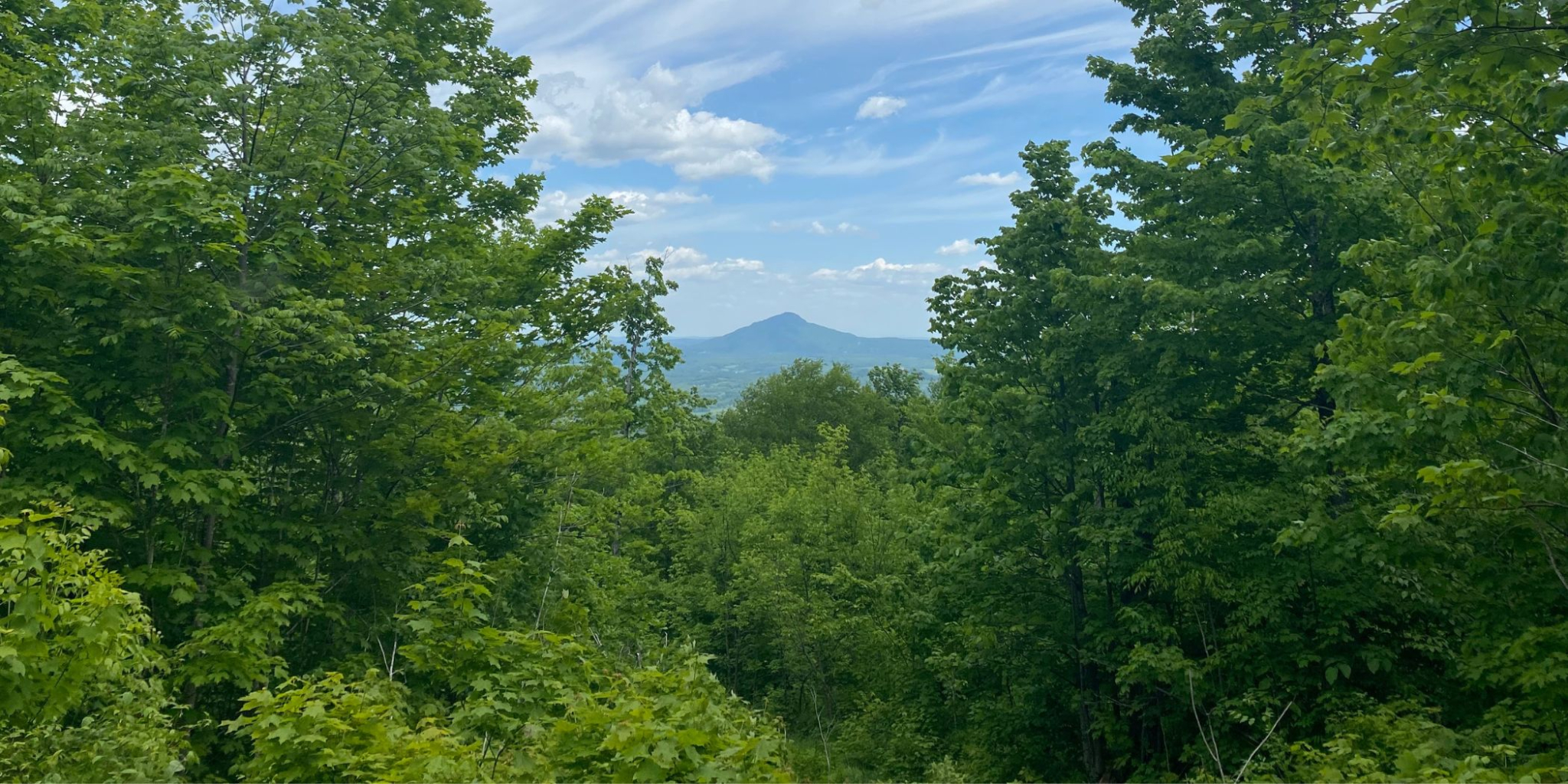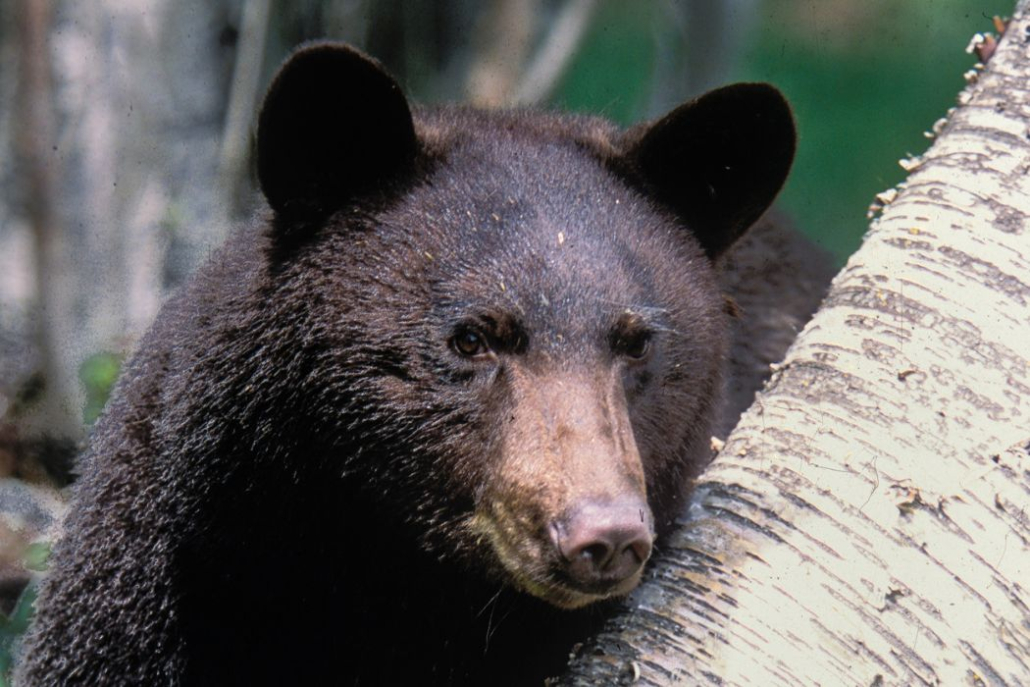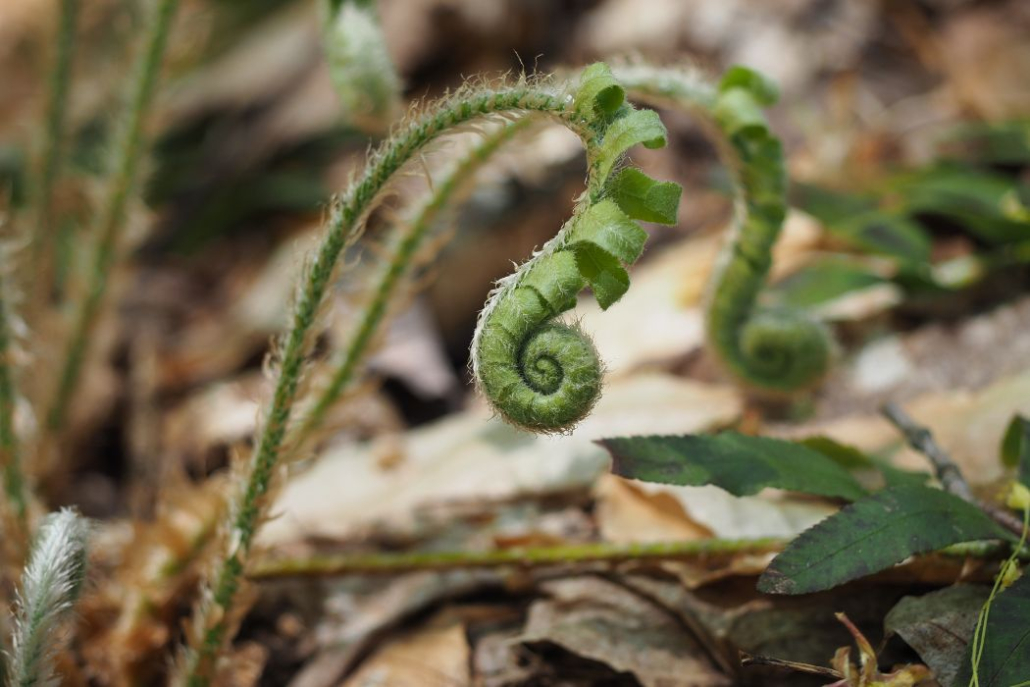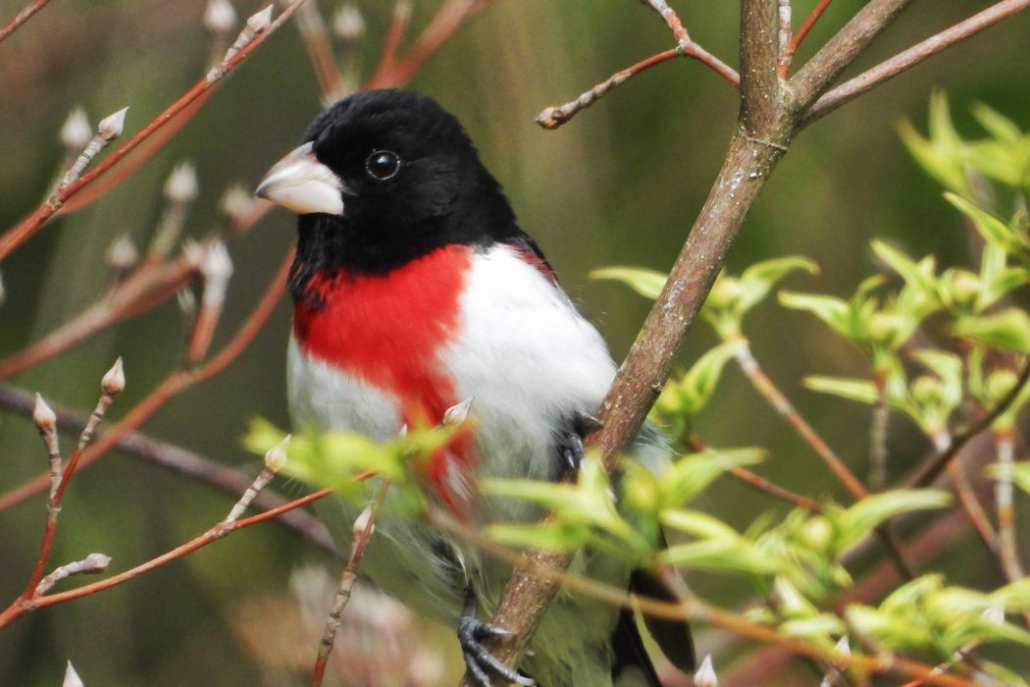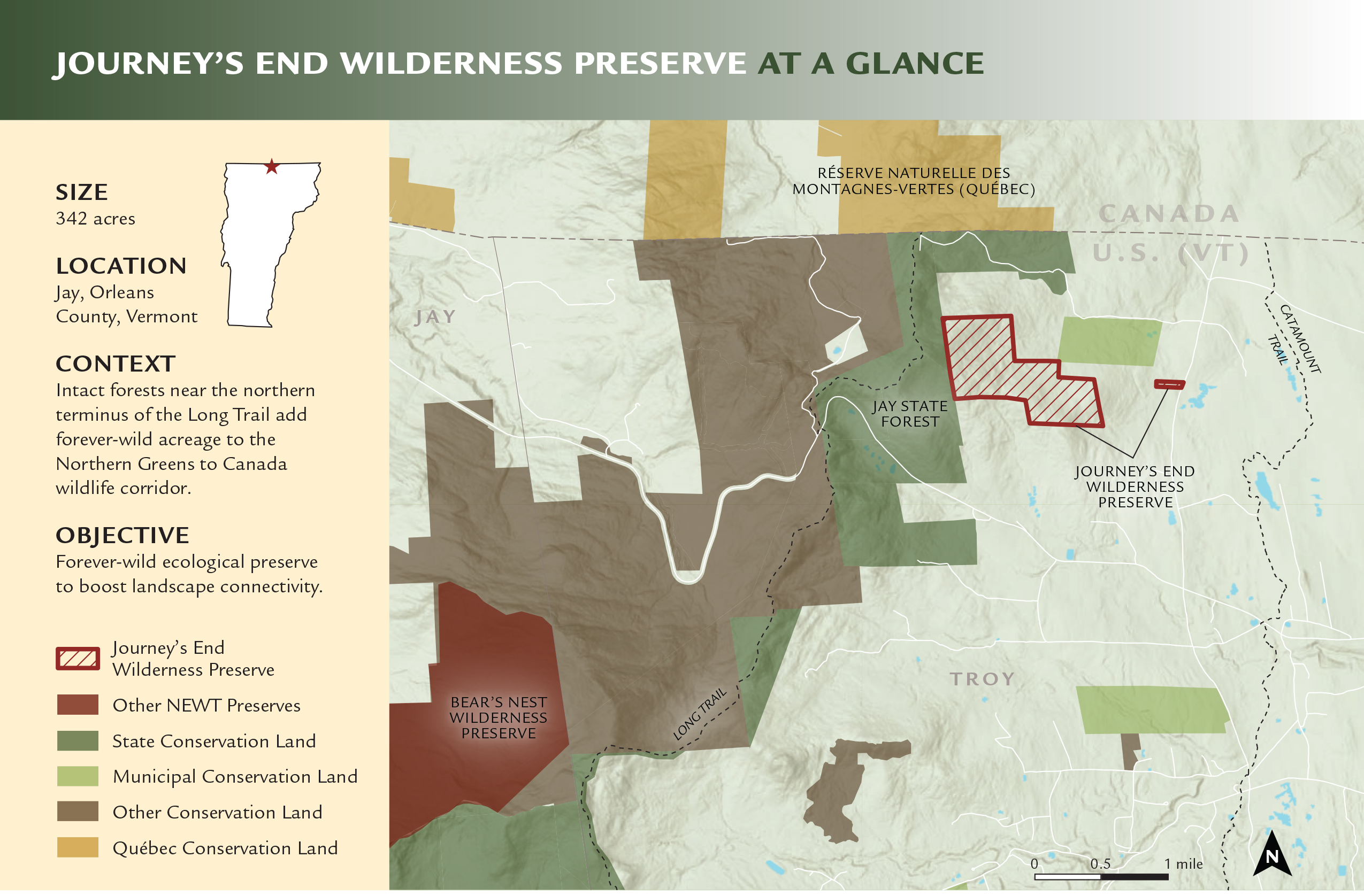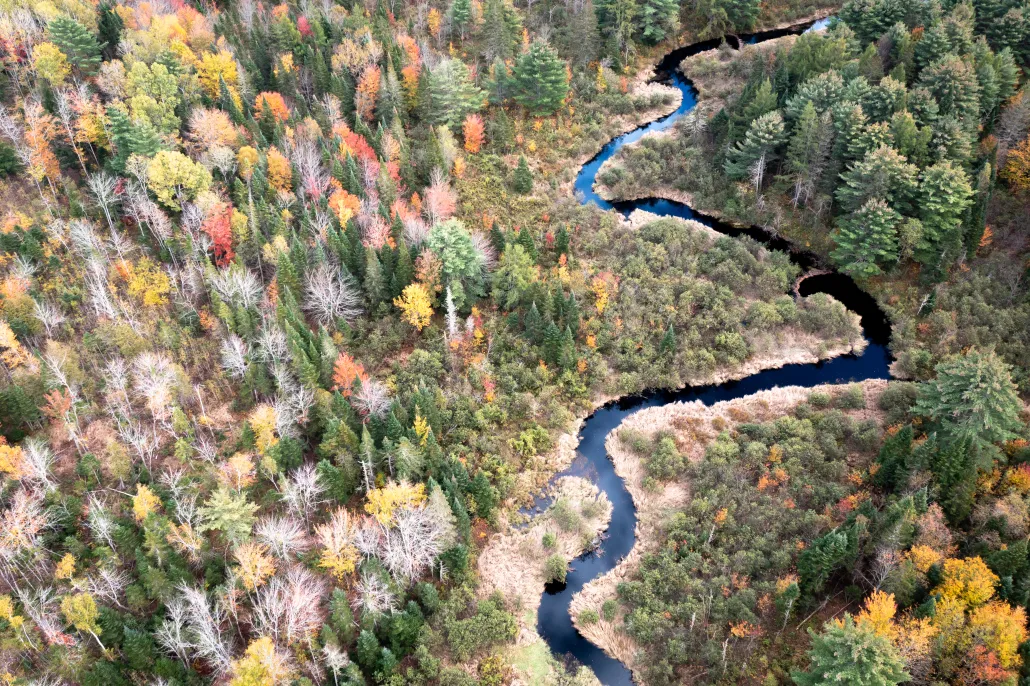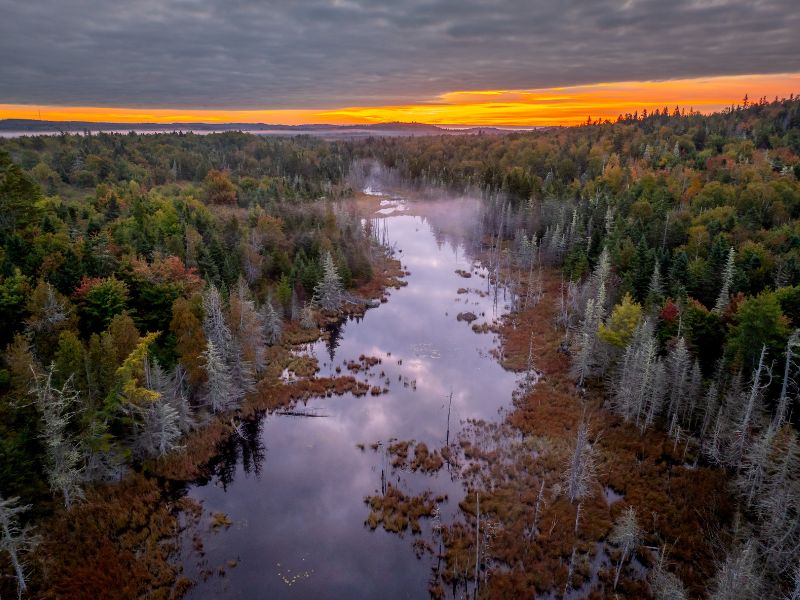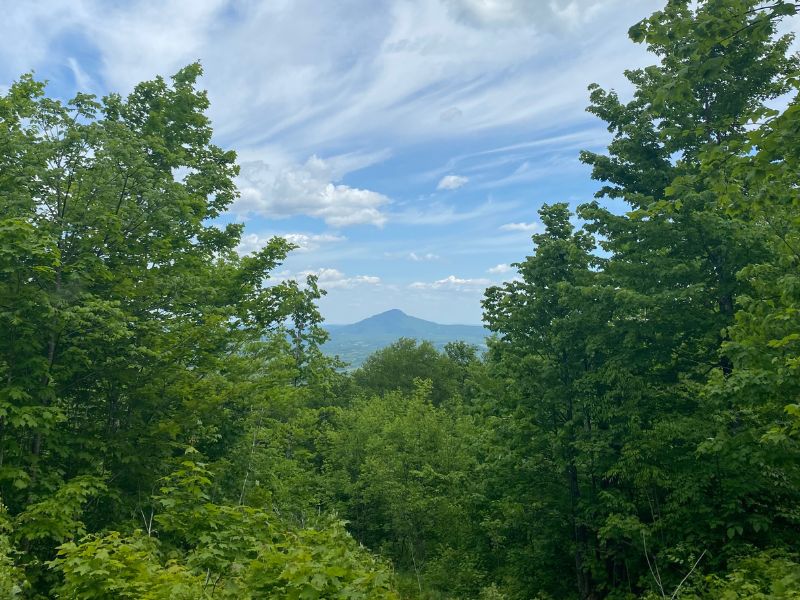A forever-wild jewel on the U.S.-Canada border
The town of Jay, Vermont enjoys a privileged perch in the state’s conservation landscape. Jay State Forest, home to the renowned Jay Peak, sits partially within the town’s limits, and when intrepid hikers start or finish their adventure on the 273-mile Long Trail, they do so in Jay.
The town now has another feather in its conservation cap. Journey’s End Wilderness Preserve, which encompasses more
than 300 acres of forever-wild forests and wetlands about a mile south of the Canadian border, ensures that a crucial piece of a transnational wildlife corridor is permanently protected from extraction and development while further enriching a vibrant tapestry of tens of thousands of acres of conserved lands.
Boosting Landscape Connectivity for Roving Wildlife
Journey’s End Wilderness Preserve’s name evokes the conclusion of a long, eventful odyssey—appropriate for its proximity to the Long Trail, the oldest long-distance hiking trail in the United States—but the property’s protection also symbolizes progress towards a hopeful conservation future. The parcel abuts other conserved lands totaling more than 30,000 acres and is fewer than 5 miles from Northeast Wilderness Trust’s 2,716-acre Bear’s Nest Wilderness Preserve. It falls within the Staying Connected Initiative’s Northern Greens to Canada wildlife corridor, and Wildlands Network maps Journey’s End as within a core natural area of the Eastern Wildway, a proposed mega-linkage stretching from the Gulf of Mexico to the Canadian Maritimes.
That Journey’s End bolsters these landscape-level conservation ambitions motivated the land’s former owners to protect it permanently. Ted Vogt and Susan Shea “share a commitment to land conservation in Vermont (and elsewhere),” said Vogt. They recognized early on that their property was located in the Northern Greens to Canada corridor, and that its ecological features, including a headwater stream and ample beech stands, sustain their local wildlife, like black bear. These contextual and ecological considerations led the couple to seek a forever-wild future for the parcel to support the species—and the planet—they revere.

